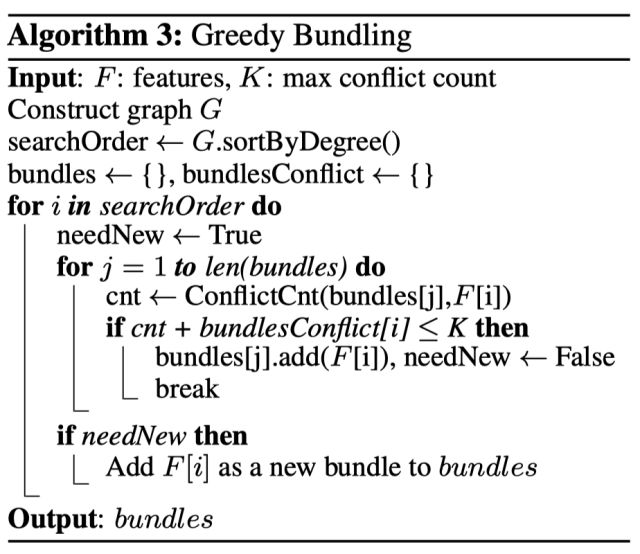GradientBoost算法 python实现,该系列文章主要是对《统计学习方法》的实现。
完整的笔记和代码以上传到Github,地址为(觉得有用的话,欢迎Fork,请给作者个Star):

https://github.com/Vambooo/lihang-dl
提升树利用加法模型与前向分步算法实现学习的优化过程,当损失函数为平方损失和指数损失函数时,每一步优化都较为简单。但对一般损失函数来说,每一步的优化并不容易。Fredman为了解决这一问题,便提出了梯度提升(Gradient Boosting)方法。
梯度提升法利用最速下降的近似方法,这里的关键是利用损失函数的负梯度在当前模型的值r_{mi}作为回归问题提升树算法中的残差的近似值,拟合一个回归树。

梯度提升方法(Gradient Boosting)算法

注:该步通过估计使损失函数极小化的常数值,得到一个根结点的树。


Gradient Boost算法案例 python实现(马疝病数据)
(代码可以左右滑动看)
import pandas as pdimport numpy as npimportmatplotlib.pyplotaspltfrom sklearn import ensemblefrom sklearn import linear_model
第一步:构建数据
# 创建interwetten与威廉的赔率体系 数据xx = np.arange(0, 60)y=[ x / 2 + (x // 10) % 2 * 20 * x / 5 + np.random.random() * 10 for x in xx] x = pd.DataFrame({'x': x}) # Plot mock dataplt.figure(figsize=(10, 5))plt.scatter(x, y)plt.show()

线性回归模型来拟合数据
linear_regressor=linear_model.LinearRegression()linear_regressor.fit(x, y) plt.figure(figsize=(10, 5))plt.title("Linear Regression")plt.scatter(x, y)plt.plot(x, linear_regressor.predict(x), color='r')plt.show()

线性回归模型旨在将预测与实际产出之间的平方误差最小化,从我们的残差模式可以清楚地看出,残差之和约为0:
梯度提升法使用一组串联的决策树来预测y
下面从只有一个估计量的梯度提升回归模型和一个只有深度为1的树开始:
params = { 'n_estimators': 1, 'max_depth': 1, 'learning_rate': 1, 'criterion': 'mse'}
gradient_boosting_regressor = ensemble.GradientBoostingRegressor(**params)
gradient_boosting_regressor.fit(x, y)
plt.figure(figsize=(10, 5))plt.title('Gradient Boosting model (1 estimators, Single tree split)')plt.scatter(x, y)plt.plot(x, gradient_boosting_regressor.predict(x), color='r')plt.show()

从上图可以看到深度1决策树在x<50 和x>50处被拆分,其中:
if x<50 ,y=56;
if x>=50,y=250.
这样的拆分结果肯定是不好的,下面用一个估计量时,30-40之间的残差很。猜想:如果使用两个估计量,把第一棵树的残差输入下一棵树中,有怎样的效果?验证代码如下:
params['n_estimators'] = 2
gradient_boosting_regressor = ensemble.GradientBoostingRegressor(**params)
gradient_boosting_regressor.fit(x, y)
plt.figure(figsize=(10, 5))plt.title('Gradient Boosting model (1 estimators, Single tree split)')plt.scatter(x, y)plt.plot(x, gradient_boosting_regressor.predict(x), color='r')plt.show()

如上图,当有连个估计量时,第二棵树是在30处拆分的,如果我们继续增加估计量,我们得到Y分布的一个越来越接近的近似值:
f, ax = plt.subplots(2, 2, figsize=(15, 10)) for idx, n_estimators in enumerate([5, 10, 20, 50]): params['n_estimators'] = n_estimators gradient_boosting_regressor = ensemble.GradientBoostingRegressor(**params) gradient_boosting_regressor.fit(x, y) subplot = ax[idx // 2][idx % 2] subplot.set_title('Gradient Boosting model ({} estimators, Single tree split)'.format(n_estimators)) subplot.scatter(x, y) subplot.plot(x, gradient_boosting_regressor.predict(x), color='r')plt.show()

上面是改变估计量,保持树深度的效果,下面保持估计量为10,改变树的深度.
params['n_estimators'] = 10
f, ax = plt.subplots(2, 2, figsize=(15, 10))
for idx, max_depth in enumerate([1, 2, 3, 5]): params['max_depth'] = max_depth
gradient_boosting_regressor = ensemble.GradientBoostingRegressor(**params)
gradient_boosting_regressor.fit(x, y) subplot = ax[idx // 2][idx % 2] subplot.set_title('Gradient Boosting model (10 estimators, {} max tree splits)'.format(max_depth)) subplot.scatter(x, y) subplot.plot(x, gradient_boosting_regressor.predict(x), color='r')plt.show()

上两图可以看到如何通过增加估计量和最大深度来拟合y值。不过有点过拟合了。
-
算法
+关注
关注
23文章
4612浏览量
92880 -
python
+关注
关注
56文章
4797浏览量
84673
原文标题:机器学习笔记系列(十三) | GradientBoost算法 python实现
文章出处:【微信号:AI_class_vip,微信公众号:人工智能学研社】欢迎添加关注!文章转载请注明出处。
发布评论请先 登录
相关推荐
《MATLAB优化算法案例分析与应用》
机器学习新手必学的三种优化算法(牛顿法、梯度下降法、最速下降法)
基础算法案例
一种改进的梯度投影算法
机器学习:随机梯度下降和批量梯度下降算法介绍

一文看懂常用的梯度下降算法
改进深度学习算法的光伏出力预测方法

将浅层神经网络作为“弱学习者”的梯度Boosting框架





 梯度提升方法(Gradient Boosting)算法案例
梯度提升方法(Gradient Boosting)算法案例














评论